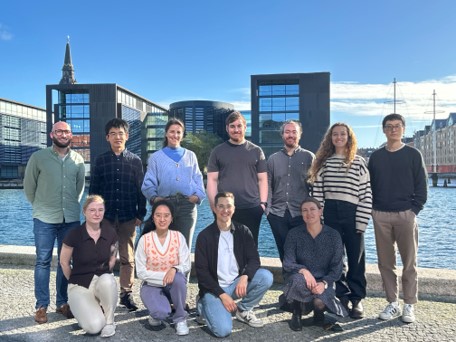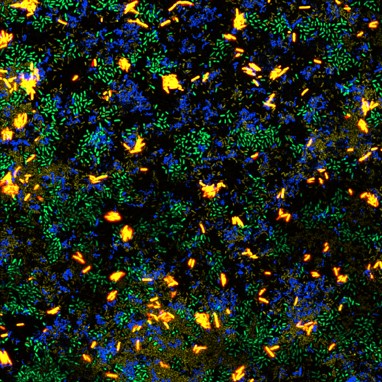Multispecies biofilms

Multispecies Biofilm Group
A biofilm is a microbial community encased in a protective matrix. Biofilms impact ecosystems and our daily life. Organic matter degradation and recycling in nature happen in biofilms. Also, biofilms are relevant in medicine and industry, with beneficial as well as problematic consequences.
In the Multispecies Biofilm Group, we study bacterial interspecies interactions in biofilms. Specifically, we are interested in identifying the functional, ecological and evolutionary impacts of such interactions. We study the underlying mechanisms of bacterial interactions and how they lead to enhanced tolerance, metabolic capacities and protection, compared to biofilms and planktonic cultures of the individual strains grown in isolation. We believe that we can only properly understand, exploit, and control multispecies biofilms, if they are explored as units.
We work with bacterial isolates from communities of relevance to the research question posed, including ecological, industrial and medical settings. We apply classical microbiological methodology combined with various biofilm models, advanced high-resolution imaging and much more.
Ongoing projects in the group:
- BioMatrix: The biofilm matrix and its functional role in the ecology of bacterial communities LINK: https://www1.bio.ku.dk/english/research/microbiology/funded-projects/biomatrix/
- COPE: How multispecies biofilms cope with phage infections

In the Multispecies Biofilm Group student projects are always associated to the ongoing projects and activities in the group. You will work in close collaboration with group members, addressing aspects of bacterial interspecies interactions in multispecies biofilms. You will get the opportunity to study if specific bacterial isolates cooperate or compete in biofilms and if this leads to altered or new properties of the community. Projects can also aim to identify molecular mechanisms facilitating interspecies interactions in biofilms. You can also study the role of specific biofilm matrix components, genetically engineer biofilm bacteria, or identify conditions/structural components conferring protection to bacteriophage infection or protozoan grazing.
Common techniques used:
-Biofilm model systems
-Microscopy analysis (incl. confocal microscopy)
-Quantitative image analysis
-Genetic engineering
-Genome sequencing and analysis
For more information on student projects, please contact Mette Burmølle
Keywords: Biofilms, microbial interactions, evolution, synergy
Supervisor(s): Mette Burmølle,
Email: burmolle@bio.ku.dk
Section of Microbiology

Contact
 Associate professor
Associate professor
Mette Burmølle
Universitetsparken 15
Building 1, 1st floor
DK-2100 Copenhagen
Email: burmolle@bio.ku.dk
